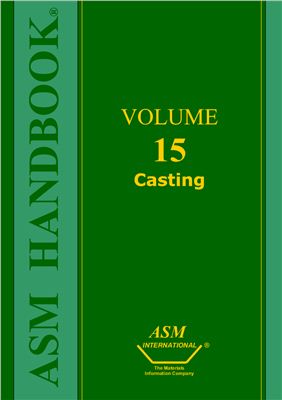ASM Inteational, 2002, 2002 p.
The Handbook is structured in ten Sections, along with a Glossary of Terms. The reader is first introduced to the historical development of metal casting, as well as to the advantages of castings over parts produced by other manufacturing processes, their applications, and the current market size of the industry. Then, the thermodynamic relationships and properties of liquid metals and the physical chemistry of gases and impurities in liquid metals are discussed. A rather extensive Section reviews the fundamentals of the science of solidification as applied to cast alloys, including nucleation kinetics, fundamentals of growth, and the more practical subject of interpretation of cooling curves. Traditional subjects such as pattes, molding and casting processes, foundry equipment, and processing and design considerations are extensively covered in the following Sections. Considerable attention has been paid to new and emerging processes, such as the Hitchiner process, directional solidification, squeeze casting, and semisolid metal forming. The metallurgy of ferrous and nonferrous alloys is extensively covered in two separate Sections. Finally, there is detailed information on the most mode approach to metal casting, namely, computer applications. The basic principles of modeling of heat transfer, fluid flow, and microstructural evolution are discussed, and typical examples are given.
The Handbook is structured in ten Sections, along with a Glossary of Terms. The reader is first introduced to the historical development of metal casting, as well as to the advantages of castings over parts produced by other manufacturing processes, their applications, and the current market size of the industry. Then, the thermodynamic relationships and properties of liquid metals and the physical chemistry of gases and impurities in liquid metals are discussed. A rather extensive Section reviews the fundamentals of the science of solidification as applied to cast alloys, including nucleation kinetics, fundamentals of growth, and the more practical subject of interpretation of cooling curves. Traditional subjects such as pattes, molding and casting processes, foundry equipment, and processing and design considerations are extensively covered in the following Sections. Considerable attention has been paid to new and emerging processes, such as the Hitchiner process, directional solidification, squeeze casting, and semisolid metal forming. The metallurgy of ferrous and nonferrous alloys is extensively covered in two separate Sections. Finally, there is detailed information on the most mode approach to metal casting, namely, computer applications. The basic principles of modeling of heat transfer, fluid flow, and microstructural evolution are discussed, and typical examples are given.

